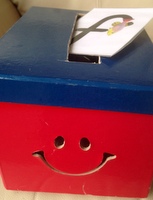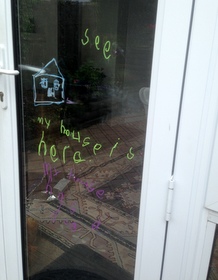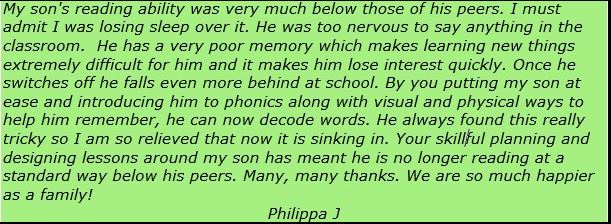Phonics Games Top Tips
Most of my phonics games top tips involve using "props."
Props are everywhere, both inside the house and
outside. They make it possible to make your child’s learning portable. You can
teach them anywhere and everywhere and without it costing much.
Your local discount store is a goldmine of ideas... all you need is a little imagination. Inside you'll find inexpensive things you can buy and use to encourage your child to have fun while learning.
I explain below a range of free props you can use ... as well as cheap ones I have bought and how I use them.
If you read my article on Phonics Games (there is a link to it at the end of this page) you will understand how I used them with Jessica, a child who found it difficult to settle to learn.
Phonics Games Top Tip # 1
- Scour the cupboards for useful props. Children love hunting for words or sounds under or inside other things. Pots, pans, bowls, laundry baskets and containers are perfect for this.
Phonics Games Top Tip # 2
- Kids find something magical about seeing things appear and disappear. Post letters or words through a gap in a chair, in a box with a slit in the lid or under a door between two rooms. They love practising when they are having fun rather than sitting still, especially after a long day at school.
 This post box was bought at a discount store but is easy enough to make out of any box you have at home.
This post box was bought at a discount store but is easy enough to make out of any box you have at home.Phonics Games Top Tip # 3
- Write letters, words or sentences on cards and get your child to drive them around the room on the back of a toy truck. When they ‘deliver’ each card to you, ask them to read it, and then dump it if it is correct. Alternatively hide things in the different rooms of a dolls house.

Phonics Games Top Tip # 4
- Go to the beach and write a message in the sand that your child will be able to decode and read aloud to you. Encourage them to write something back. Practice anything using the sand as your 'paper'. It's a great way to practice handwriting and spelling. You can simply rub away your mistakes and start again.
Phonics Games Top Tip # 5
- Board games are another great way to check your child’s progress and give them practice. Children love them. It teaches them how to share, take turns, compete and learn patience. I tailor-make board games for my students and put stickers on them following a theme... vehicles, fairies, dinosaurs... anything I know they’ll be interested in.
Phonics Games Top Tip # 6
- Take your child for a walk. Study street signs and hunt for familiar letters or words. This can be done at many levels. If your child is 4 or 5, ask them to look for letters inside street signs that have any letters of their name inside them. If they are a little older ask them to read the name (or you read it for them) then ask them to clap out the number of syllables in the word.
- Syllable clapping is an essential part of being able to read. It is part of your child being phonologically aware. If you would like a simple explanation of what that means and why it is important ...
Phonics Games Top Tip # 7
- At the playground, hide words and letters anywhere that is fun. Hide them inside a tunnel and get your child to crawl in and find them. Show them a word when they are at the bottom of the slide. If they can read it, they get to go up and slide down again.
Phonics Games Top Tip # 8
- If you are in a restaurant, use the menu as a great opportunity to discuss phonics with your child. Take a meal, for example fish and chips. If you have been working on consonant blends you can ask them if they can see any consonant blends in those words (sh and ch). Just remember to keep it fun. They are more likely to respond if you keep the mood light.
Phonics Games Top Tip # 9
 These colourful fridge magnets cost very little at the discount store. Children love them.
These colourful fridge magnets cost very little at the discount store. Children love them.- Fridge magnets: I have a collection of magnets which cover all the letters of the alphabet, for example, an apple, bear, cow, dog... If a child is learning their sounds, I put the magnets in a bag. I then ask the child to close their eyes, reach in and pull each of them out one-by-one. As they do so they tell me what sound each makes. They can then run to the fridge and place them on.
- As they master the sound of each letter I ask if they can then write the letter. If they can’t write, I ask them to look at a range of alphabet cards I have spread out in front of them and show me the letter that makes the sound.
- If instead I want them to write a sentence or story, I might show them a selection of magnets or ask them to choose for themselves. For example I might use a parrot, a rainbow and a frog and ask them to write something linking them together.
Phonics Games Top Tip # 10
- Stickers: I don’t just use stickers as a reward for good work. I think about the personality of the child I am teaching and buy stickers with a theme I know will appeal to them. We talk about what is happening in each sticker. Again, if I am teaching sounds I encourage the child to tell me the sounds of things on that particular sticker.
- If they are at a more advanced level, I ask them to arrange the stickers in a sequence and tell me a story about what is happening. Then we work together to write about it.
Phonics Games Top Tip # 11
 This is an excellent game for one or more children. You can use skittles for teaching individual sounds, blends and whole words including sight words...let your imagination flow.
This is an excellent game for one or more children. You can use skittles for teaching individual sounds, blends and whole words including sight words...let your imagination flow.- Buy a cheap plastic 10-pin bowling set: Tape the sounds, blends or words you want your child to learn on individual skittles. Ask them to read them in turn then try to knock each particular skittle down.
- Alternatively, show them something you want them to read. Providing they read it correctly or make a good attempt, they get the chance to bowl the skittles over. If they make a mistake, tell them what it is then place the question at the back of the pile and try the next one. Say "We'll try that one again later."
Phonics Games Top Tip # 12

- Chalk pens are a wonderful tool that can be used to write on glass. You buy them at a stationery store and they come in several colours.
- Keep them as a treat to be used at the end of a lesson or for when your child is getting tired. Nothing excites them more than to be able to write on windows!
- All you need is a piece of paper towel or a wet cloth to remove the pen marks.
- With these pens writing really becomes a game. Watch children extend themselves and write words, sentences and even stories you didn't think they were capable of.

Go From Phonics Games Top Tips to Phonics Games
Go to Home Page
To Top of Page




